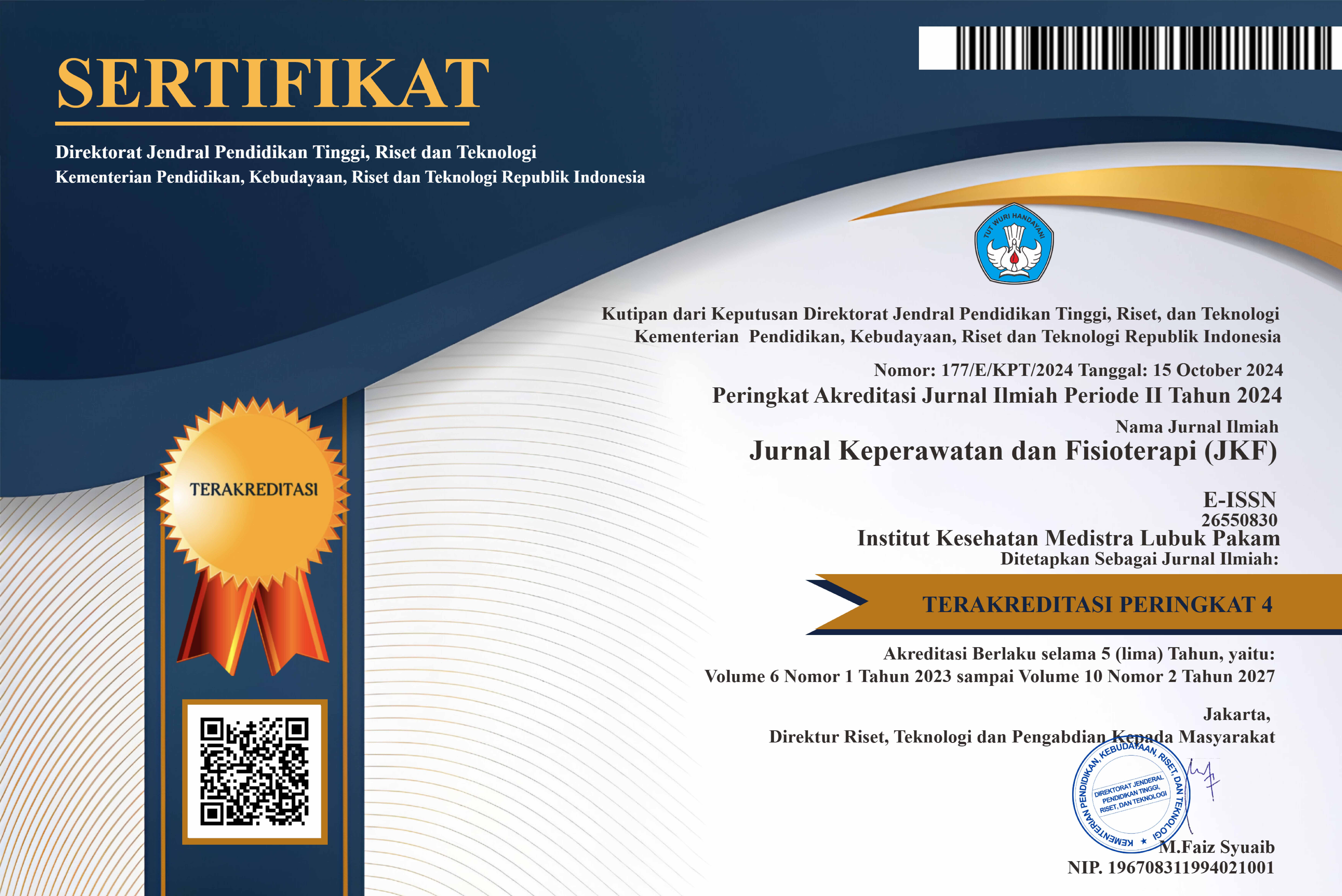PENGARUH SPIRITUAL EMOTIONAL FREEDOM TECHNIQUE TERHADAP INTENSITAS NYERI PADA PASIEN POST SECTIO CAESAREA DI RUMAH SAKIT GRANDMED LUBUK PAKAM TAHUN 2020
DOI:
https://doi.org/10.35451/jkf.v3i1.506Keywords:
decreased intensity, pain, SEFT therapyAbstract
This study aims to determine the effect of Spiritual Emotional Freedom Technique on Pain Intensity in Post Sectio Caesarea Patients in the Hospital. Grandmed Lubuk Pakam. The benefit of Spiritual Emotional Freedom Technique Therapy is to ensure that the flow of psychological resistance, in the form of spontaneous negative thoughts or negative unconscious beliefs.This study included a qualitative study with One Group pre and Post test design conducted at the Grandmed Lubuk Pakam Type-B Hospital. The study was conducted from January to June 2020 with a population of 160 patients with sectio caesarea and the sample method used was using the method purposive sampling. The data collection technique used is using the Observation Test Statistic Sheet used in this study is Wilcoxon to see there is an independent influence with the Spiritual Emotional Freedom Technique technique in post Sectio Caesarea patients.Based on the results of research and analysis used it was found that the majority of respondents aged 23-26 years, Employment Employees with 23 respondents and the last educated junior high school with 14 respondents. There is an influence of Spiritual Emotional Freedom Technique therapy on pain intensity in Caesarean post section patients with a value of p = <.000 <0.05.
Downloads
Downloads
Published
Issue
Section
License
Copyright in each article is the property of the Author.


























